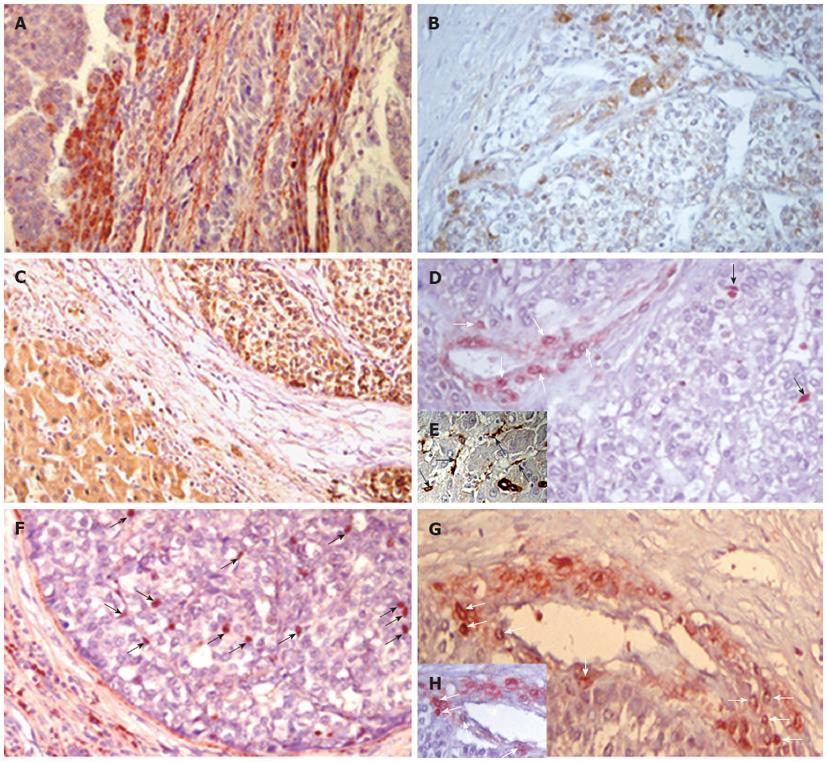Copyright
©2012 Baishideng Publishing Group Co.
World J Gastroenterol. Dec 21, 2012; 18(47): 7070-7078
Published online Dec 21, 2012. doi: 10.3748/wjg.v18.i47.7070
Published online Dec 21, 2012. doi: 10.3748/wjg.v18.i47.7070
Figure 2 Expression of connective tissue growth factor mRNA and its association with epithelial-mesenchymal transition in hepatocellular carcinoma.
Connective tissue growth factor (CCN2) mRNA (A) or protein (B) were detected in hepatoma cells at the edge of carcinoma foci by in situ hybridization or immunohistochemistry respectively; C: E-cadherin was only weakly detectable in carcinoma foci but stained more intensely in normal hepatocytes; D, E: Fibroblast-specific protein-1 (FSP-1)-positive hepatoma cells (white arrow) were located at a position between the edge of carcinoma foci and vascular wall; FSP-1-positive (black arrows) (D) or (E) α-smooth muscle actin-positive (black arrows) fibroblast-like or myofibroblast-like hepatic stellate cell (HSC) were found within carcinoma foci; F-H: CCN2 mRNA was detected in either fibroblast-like or myofibroblast-like HSC (black arrows); CCN2 mRNA (G) or (H) FSP-1 were found in some hepatoma cells. Original magnification, × 400 in A, B, C, D, F and G, × 200 in E and H. Examples of positively stained cells or structures in each panel are arrowed.
- Citation: Xiu M, Liu YH, Brigstock DR, He FH, Zhang RJ, Gao RP. Connective tissue growth factor is overexpressed in human hepatocellular carcinoma and promotes cell invasion and growth. World J Gastroenterol 2012; 18(47): 7070-7078
- URL: https://www.wjgnet.com/1007-9327/full/v18/i47/7070.htm
- DOI: https://dx.doi.org/10.3748/wjg.v18.i47.7070









